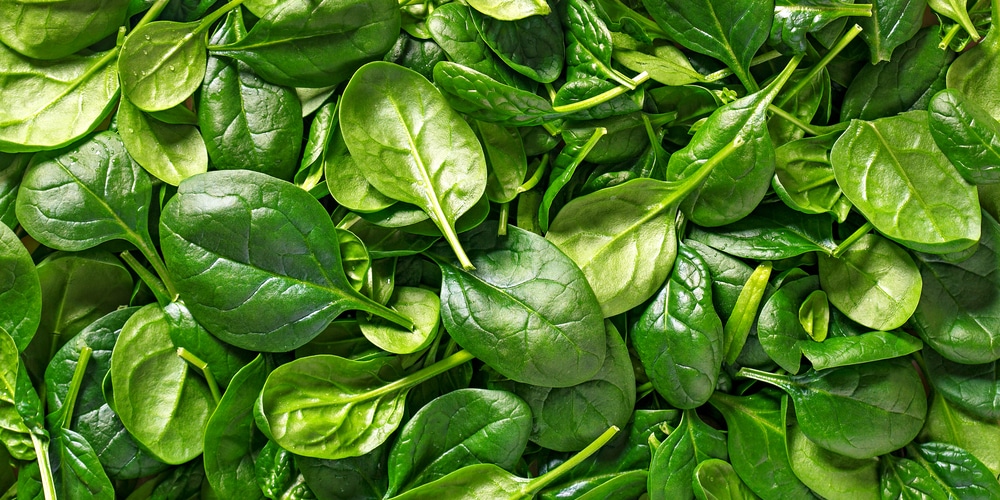Spinach, like other greens, is one of the easiest plants to grow. Although it originated from Iran, it has become a popular plant in American gardens. Spinach started becoming popular in the early 1900s in Texas. Its popularity grew so much that the world considered this state a leader in spinach production.
Today, Texas has designed programs to help develop new spinach varieties and techniques for packaging and marketing this vegetable. Read on to learn how to grow spinach in Texas.
Why Grow Spinach?
Before we talk about the growth and care guidelines, it’s essential we begin our discussion from this point. Although spinach is widely available, not many people know its benefits. Spinach is a nutritious vegetable, and unlike what most of us believe, it’s not rich in iron. But it contains high amounts of beta carotene, ascorbic acid, folic acid thiamin, and riboflavin. Individuals can also get protein, calcium, and potassium from eating this vegetable.
Additionally, it also contains lutein and zeaxanthin that have been linked to prevention of cataracts and macular degeneration. Spinach, therefore, is a great vegetable for all types of growers.
How to Grow Great Spinach?
While spinach offers many benefits for us, it’s not an easy vegetable to grow. It prefers a neutral to high pH and sufficient soil moisture to grow. However, it won’t grow in waterlogged soil conditions.
Soil
Gardens on the eastern side of Texas tend to have acidic soils. Therefore, consider including some lime to neutralize the soil so spinach can tolerate it. But first, you need to test your soil to determine the lime you need. Generally, experts advise approximately 5 pounds of lime per 100 sq. ft. for acidic soils.
If your soil is sandy, you need to mix it with compost to boost its water and nutrients retention capabilities. Also, note that compost or manure will encourage spinach to grow as it has a limited root system. Gardens with clay soil can also use compost, and growers may need to use raised beds and marginal drainage areas for this soil. This ensures that the roots aren’t damaged by the soggy conditions.
Planting
Plant various rows across or along raised beds. Doing that helps you maximize space and allow enough for growth. Remember to leave 8-10 inches of space apart from the plant rows. This could be across or down the bed. Additionally, growers are advised to stagger their plantings by 10-14 days for better growth and a large harvest.
Fertilizing
Spinach needs plenty of fertilizer to grow well. Nitrogen is needed to help with the dark green color on the leaves. Apply a general garden fertilizer before you plant your vegetable. Preferably, opt for a 10-10-10 fertilizer and fertilizer at the rate of 2-3 pounds/100 square feet. Or fertilize as per the soil test report.
Remember to mix the fertilizer into the soil; three or so inches should be enough. Use 1/4 -1/3 cup of fertilizer with every 10 feet row. Then, wait at least 30 days for the plants to come up before fertilizing again.
Light Requirements
Spinach needs sunlight to grow. But, you should also provide it with shade. It’s best to grow spinach in part sun to bright shade areas like under a deciduous tree. This helps it get the light it needs and also cools the soil. Therefore, giving the seedlings an excellent start. By the time the fall season is over, the tree leaves will start dropping, which allows sunlight to penetrate your growing plants.
Caring for Spinach
Caring for your plants is important if you want an abundant harvest. For spinach, you have to remember to offer them shade from the hot weather. Too much heat will dry the soil and make your plant start bolting. That’s why it’s advisable to plant the spinach next to a pole or runner that can shade them from the sun’s heat.
Additionally, you also need to protect the seedlings from birds, snails, and slugs and if sown in the fall, protect them from the cold using a cloche or fleece. Again, remember to water and fertilize your plant. However, try not to wet the leaves.
General Guidelines for Planting Spinach in Texas
Spinach is usually seeded in the garden directly. But, you have to ensure that the soil isn’t warm to support germination. Here is where most Texas gardeners go wrong. The proper soil needed for germination should be 75 degrees F or lower. Also, remember that sun and shade can make a huge difference in how your plant grows.
Generally, you should plant spinach at least two months before the first frost date in your area. For those in central Texas, this means planting in mid-September. But you can begin a month earlier in Northern areas or later in southern parts of the state. Please remember that weather is a primary factor when planting spinach.
Also, soak your seeds for 24 hours in the fridge before you plant. This helps them absorb water and start the germination. Again, water the soil before planting and plant the seeds ¼ inches deep.
Best Spinach Varieties for Texas
Spinach varieties are smooth/flat, savoyed, or semi-savoyed. Smooth types are best for canning, while the other two categories are grown for fresh eating. Many spinach varieties will do well in Texas if provided with the right growing conditions.
But, in south Texas, diseases are a great challenge, and many varieties tend to die. Nevertheless, the best spinach varieties for Texas gardeners include Samish, hybrid-7, melody, fall green, and bloomsdale.
How to Grow Spinach in Texas: Final Thoughts
If you are wondering what to plant in your garden, consider this vegetable. You can plant two or more varieties in your Texas garden. But make sure you provide proper growing conditions.


